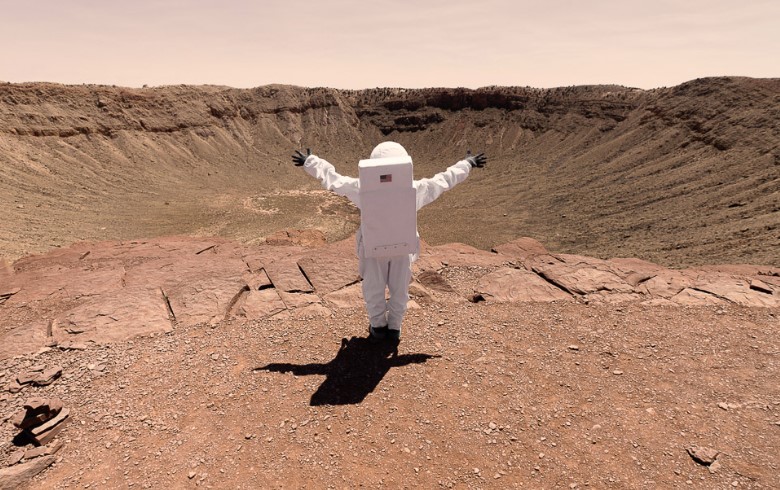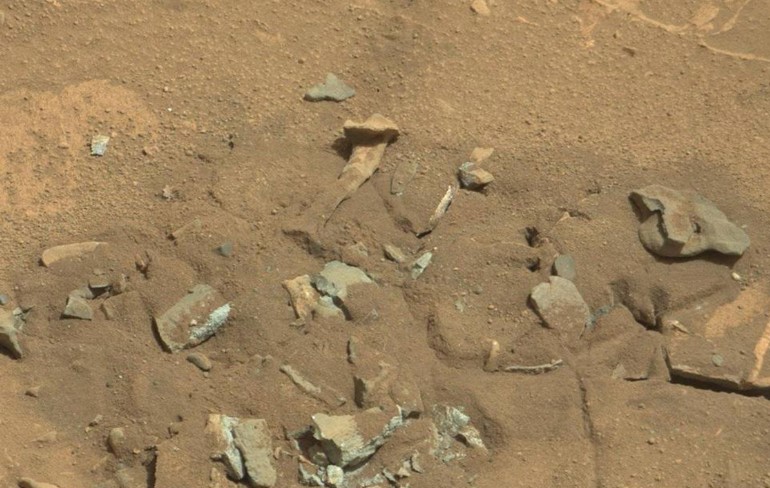The latest trash discovery on Mars has scientists baffled. A thermal blanket was found 2 km away from its original location. Some think the thermal blanket is a sign of life on the red planet. Scientists are unsure what caused it to get blown away. NASA scientists have no answers for this yet. What they do know is that NASA’s Perseverance rover accidentally ditched some instruments while it was flying down to Mars.
In a recent discovery, the Curiosity Rover has found an interesting find on the surface of Mars: trash. It wasn’t just any trash, but a piece of rubber that seemed to be part of a tire. This isn’t the first time space explorers have discovered evidence of humans reaching other planets either. Our garbage is reaching Mars, but that might not be the most surprising part. It turns out that it’s not just our planet we’re polluting.

Perseverance rover spotted aluminum foil in dried-up river delta in Jezero Crater
NASA’s Perseverance rover recently spotted aluminum foil in a dried-up river delta in Jezero crater. The rover took detailed images of the delta, which showed escarpments, scarps, and accumulating sedimentary deposits. The rover’s Mastcam-Z and Remote Micro-Imager cameras took the images. The images of the crater suggest that an ancient river and lake once flowed through the crater. They probably carried 106,000 cubic feet of water a second.
The NASA-sponsored rover spotted the foil on a rock in the crater near its crash site. The rover was on a mission to study the red planet’s surface and gather samples. Scientists are still not certain whether or not the foil fell during the rover’s descent, or whether the rover spotted it after Martian winds blew away its parachute.
NASA’s Perseverance rover ditched instruments on its way down
A new NASA rover is approaching a pivotal moment in its mission to Mars. It will begin a long ascent up an ancient delta feature and stop to collect samples of rocks. Scientists will collect samples from the rocks with the highest chance of retaining evidence and bring them back to Earth in the 2030s. Perseverance will continue to look for fossils in the delta area.
The descent sequence will last seven minutes, which is about the same as the flight time between Earth and Mars. The descent itself will reduce the need for motoring across the surface. After landing, Perseverance will use its “sky crane jet pack” to send images and data back to Earth. It will take another 11 minutes for the signals to reach Earth. When it arrives on Mars, mission controllers will receive the signals from the orbiter and will make the final decision if the rover has successfully landed.
Unintentional debris from past missions
NASA’s Perseverance Mars Rover has found unintentional debris on Mars. It landed last year with four other rovers. A thermal blanket, a piece of metal litter and a parachute were among the unintended debris the rover found. The rover’s protective shell also recorded the location. The wreckage was blown into the Martian atmosphere.
The pieces of spacecraft may be visible in the image. These are most likely spacecraft fragments, though some pieces may have survived impact. The images also show light spots around the fragments, which may be image noise. The pieces of spacecraft may have been scattered in different directions by the impact, as they have landed on the planet. Unintentional debris from past missions to Mars may make some areas of space unusable for space flight.

Location of trash
NASA’s Perseverance Mars Rover found a piece of human garbage on Mars. The vehicle is one of nine that the US space agency sent to investigate the mysterious planet. The debris was thermal material believed to be a piece of vehicle or windblown dust. The debris was discovered two kilometers from the crash site. NASA is now trying to figure out what happened to it. The team wants to find out if the trash landed there intentionally or was simply blown by the wind.
In addition to the trash found on Mars, NASA also found a thermal blanket that was used by a crashed spacecraft. The thermal blanket was found two kilometers from where it originally landed and may be a sign of life on the planet. The debris is considered “unusual,” but NASA says it is not yet clear what happened to it. Researchers are still looking for clues to the mystery. It may be that the debris was blown away by wind or a raging tornado.
This discovery is, and isn’t, shocking. It’s not shocking in the least that garbage has made it so far into space—since humans will throw most anything away, we have little right to be shocked when any piece of litter can actually make it all the way to a planet millions of miles away. It’s also not shocking given all the other scientific evidence we have of just how much pollution humans pump into the environment every day. Now, on the other hand, it is somewhat surprising that NASA would find our trash on another planet (and let me tell you, this robot was thoroughly cleaned for just this occasion—this is no ordinary piece of trash). But regardless of whether it’s shocking or not, what this does show is that there are serious environmental issues that need to be addressed if we’re ever going to be able to effectively explore other planets as a species.
Leave a Reply